Double Helix Piercing: Types, Process, Cost, And Aftercare
Double the elegance and elevate your ear game with these twin spirals of style!
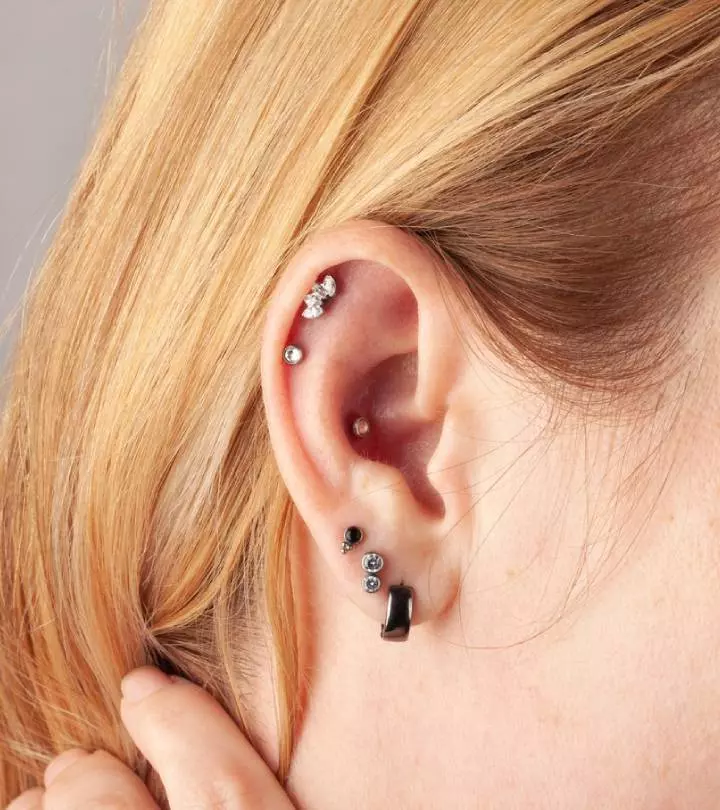
Image: iStock
Ear piercings have transcended from being mere fashion trends to becoming personal testaments etched into the skin, none more popular than the double helix piercing. From the classic allure of earlobe piercings to the avant-garde charm of intricate helix arrangements, the double helix piercing has a bold story to tell. Embracing the cartilage, it offers a personalized journey into the world of adornment. Whether you seek timeless elegance or bold statements, a double piercing invites you to explore, redefine, and celebrate the beauty of individuality with one puncture at a time. Step into the world of body adornment, where art meets anatomy and self-expression knows no bounds, right here. Learn everything you need to know about a double helix piercing, from its types to aftercare tips to ensure its safe healing in this article. Scroll down for more.
 Piercing Guide: Double Helix Piercing
Piercing Guide: Double Helix Piercing- Placement: Outer cartilage on the upper part of the ear
- Best Jewelry: Studs, hoops, or rings
- Cost: $40 to $60
- Pain Level: Medium
- Healing Time: 6 weeks to 12 months
In This Article
What Is A Double Helix Piercing?
View this post on Instagram
If you want to get an edgy, unique ear piercing, then try this trending double helix one. This captivating, avant-garde take on helix piercings involves making two holes close to each other on the outer cartilage or anywhere on the helix of the ear. The helix refers to the top cuff of the ear that is made of cartilage and is one of the popular sites for getting pierced. This type of piercing offers a unique and customizable canvas for individuals to showcase their creativity and personal style. As the helix offers a lot of aesthetic space and allows the use of different jewelry types, it has become popular among people of all ages.
Explore the intricacies of the piercing process, the diverse array of jewelry options available, and the healing time and aftercare required as you keep reading this article. Scroll down to begin by understanding how painful a double helix piercing is.
Key Takeaways
- The double helix piercing offers a unique canvas for creative expression, allowing individuals to showcase their style through a variety of jewelry options and placements along the outer cartilage of the ear.
- Some popular double helix piercings like cartilage double helix and double forward helix, provides versatility in placement and enhances the overall aesthetic appeal.
- Monitoring for signs of infection and following a proper aftercare routine is essential in ensuring a smooth and comfortable healing process for double helix piercings.
Does A Double Helix Piercing Hurt?
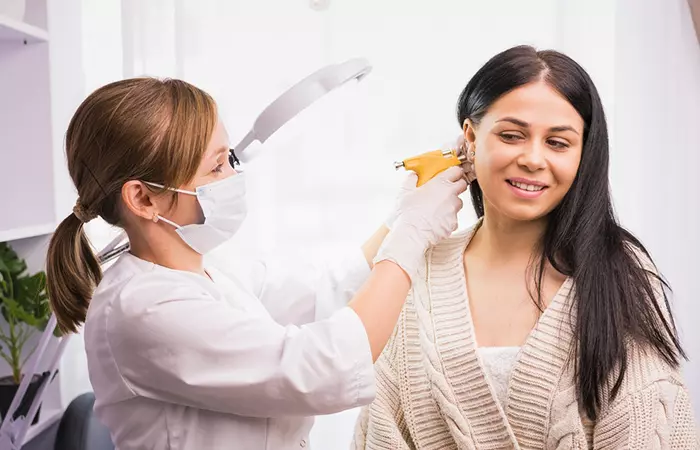
The pain experienced during a double helix piercing is subjective and varies among individuals with different pain tolerance. Generally, there is a brief moment of discomfort or a sharp pinch during the piercing process, as a sterilized needle is used to create two punctures in the cartilage along the outer rim of the ear. The pain level may be more compared to piercing soft tissues like earlobes as the cartilage is denser. However, the sensation is typically short-lived, lasting only for the duration of the procedure. Afterward, you may feel mild soreness, swelling, and tenderness, but these symptoms usually subside over the course of the healing period with proper aftercare.
Geaux Gretchen, a Youtuber, shares her experience of getting double helix piercing. Discussing the pain level, she says, “I assumed that this piercing will hurt, as it was two piercings back to back. Like there was literally two minutes in between. But it wasn’t that bad, like after the first one my whole ear got numb and then when second one happened it wasn’t really that bad (i)”
It is essential to follow proper aftercare instructions provided by your piercer to promote healing and consult a medical professional if you experience prolonged pain or inflammation.
We know double helix piercing can be painful for some individuals, so let’s check out what are the different types of double helix piercing and what is the pain level associated with them.
Types Of Double Helix Piercing
Double helix piercings provide a versatile canvas for creative ear adornment, with various types offering unique and stylish arrangements. Some of the common kinds of ear piercings include the classic parallel double helix, featuring two piercings aligned for a symmetrical look. The stacked double helix has the piercings arranged vertically for a dynamic effect. Curated double helix piercings blend different types, incorporating helix, conch piercing, or tragus piercings for a personalized composition. A spiral double helix mimics the iconic DNA structure, while an offset double helix introduces asymmetry and a triple helix piercing adds a third piercing, creating a visually captivating and elaborate ear arrangement. Now let’s have a detailed look at two of the most popular types of helix piercings:
1. Cartilage Double Helix Piercing
View this post on Instagram
Location:
Placed along the outer rim of the ear, typically through the cartilage towards the rear part of the ear.
Procedure: Involves puncturing the cartilage twice to create a double helix effect.
Pain Level: Quick, sharp pain or pressure for a brief time.
Jewelry Options: Various studs, hoops, and rings can be used for this type of piercing, providing ample room for personalization.
2. Double Forward Helix Piercing
View this post on Instagram
Location:
Positioned at the front on the forward-facing part of the ear’s upper cartilage across the helix and right above the tragus.
Procedure: Involves two piercings along the forward helix.
Pain Level: Moderate level of pain lasting till the piercing procedure
Jewelry Options: Small studs or rings are commonly used for the two forward helix piercings. The placement allows for creative combinations that enhance the aesthetic appeal of the piercings.
Both of these types of double helix piercings offer individuals the opportunity to express their personal style through a combination of jewelry choices and placement variations. Consult a professional piercer to choose the best-suited piercing and determine the approach for it. After uncovering the different types of double helix piercing, check out the next section to understand the meticulous process that brings these unique styles to life.
What Is The Process Of Getting A Double Helix Piercing?

The process of getting a double helix piercing involves several steps and must be done by a professional piercer with years of experience. A skilled piercer follows the highest hygiene standards and ensures that you have a safe and stress-free session. Here is an overview of the typical process
- Begin by consulting an expert piercer. Discuss your interest in a double helix piercing and determine the specific placement and jewelry options that align with your preferences.
- Select the type of jewelry you want like studs, hoops, or rings you want for your double helix piercings. Your piercer can provide recommendations based on your style and anatomy.
- After that the piercer will clean the area around the ear and mark the precise points for piercing, taking into consideration the desired placement and symmetry.
- Using a sterilized needle or a gun shot machine, the piercer will create the piercings at the marked points. The procedure involves a quick, sharp puncture through the cartilage.
Note: This is not a legal option in the UK as gun shot machines are strictly used for non-cartilage earlobes. - Once the piercings are made, the piercer will carefully insert the chosen jewelry. This may involve threading the jewelry through the pierced holes and securing it in place.
- After piercing, the piercer will provide you with detailed aftercare instructions to promote healing and prevent infection.
- Double helix piercings typically take some time to fully heal, so it is essential to follow the aftercare instructions. Also, schedule follow-up visits with your piercer to ensure that the piercings are healing properly.
 Quick tip
Quick tipNow that we know how the process of double piercing is done, learn how much time it takes for the piercing to heal in the section below.
Double Helix Piercing Healing Time
The exact healing time for double helix piercings can vary as it depends on the individual, but on average, it typically takes about 6 weeks to a year for the piercings to fully heal since they involve both the cartilage and the helix (1). During this period, it is crucial to follow strict aftercare practices, recommended by your piercer, to promote optimal healing and minimize the risk of complications. It is important to be patient and allow the body’s natural healing process to work at its own pace, avoiding any unnecessary movement or trauma to the pierced area. Regular check-ups with a professional piercer can help monitor the proper healing progress and address any concerns that may arise during this crucial period.
In some cases where the piercing becomes infected or bruised, the healing period may be slowed down and takes longer. If you experience any severe pain, discomfort, swelling, burning sensation, or discharge leaking, please contact your healthcare provider immediately. They can provide you with the necessary pain and antibiotic medication so your piercing heals quickly.
Beyond the patience invested in the healing process, scroll down to understand the financial aspect that accompanies the pursuit of adorning one’s ear with a double helix piercing.
How Much Does A Double Helix Piercing Cost?
The cost of a double helix piercing can vary based on factors such as the location, reputation of the piercing studio, and the type of jewelry chosen. In the United States, you can expect to pay between $40 and $60 for a double helix piercing. In the United Kingdom, the cost ranges from £20 to £40, while it typically falls between €25 and €35 in other parts of Europe. This cost often includes the initial consultation, the piercing procedure itself, as well as the jewelry. Specialty or high-end jewelry options may incur additional charges. Choose an experienced and reputable piercer to ensure a safe and successful piercing experience, even if it means paying a slightly higher price.
Since the jewelry decides the cost of double helix piercing, check out the next section to know about different options of double helix piercing jewelry.
Double Helix Piercing Jewelry Styles
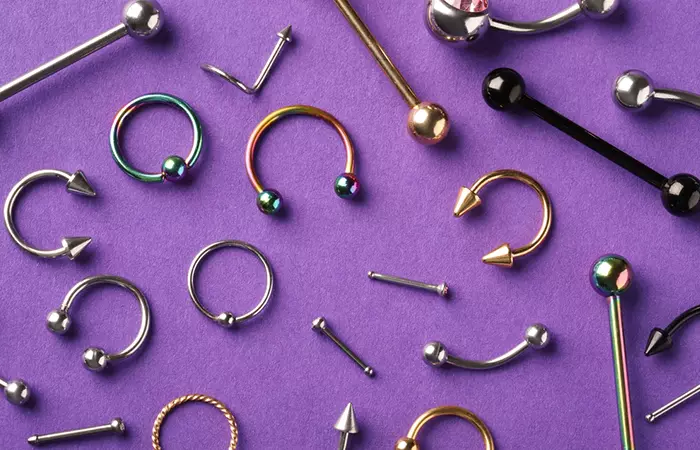
The best-suited jewelry for double piercing earrings typically includes small studs, hoops, or rings made from materials like surgical stainless steel, titanium, solid gold, platinum, or niobium (2). These materials are preferred for their hypoallergenic properties and reduced risk of irritation or infection. Studs with flat backs are especially recommended as they minimize friction and discomfort during the healing process. Hoops and rings can add a stylish and dynamic look to the double helix arrangement.
Choose jewelry of an appropriate size to accommodate any potential swelling and ensure a comfortable fit. Ultimately, the best-suited jewelry for double helix piercings combines aesthetic appeal with materials that promote healing and reduce the risk of complications, so consult your piercer before selecting it.
It is important to note that in many countries, people cannot bring their own jewelry for piercings. This is because piercing jewelry must be sterile, and many piercing studios do not have autoclaves to sterilize customers’ jewelry. So, it is best to use the pre-sterilized jewelry offered by the piercing studio to ensure a safe and hygienic piercing.
 Quick tip
Quick tipJust as the choice of jewelry defines your style, maintaining a consistent aftercare routine ensures the longevity and pristine beauty of your double helix adornment, so scroll down to know more about it.
Double Helix Piercing: Aftercare Tips
Proper aftercare is crucial for the healing of double helix piercings. Here are some key points to take care after piercing (3), (4), (5):
- Use a saline solution to clean the piercings twice a day.
- Always wash your hands thoroughly before touching the piercings to prevent introducing bacteria.
- Refrain from rotating or twisting the jewelry during the healing period, as this can disrupt the healing process and cause irritation.
- Try to sleep on the non-pierced side or use a travel pillow to reduce pressure on the piercings while sleeping.
- Minimize the use of hair products, as they can transfer onto the piercings and potentially cause irritation.
- Refrain from swimming in pools, hot tubs, or bodies of water during the initial healing period to reduce the risk of infection and also be cautious with clothing, headphones, or activities that may bump or snag the piercings.
- Resist the urge to change the jewelry too soon. Wait until the piercings are fully healed before experimenting with different pieces.
- For cleaning the piercing site, avoid using harsh chemical substances like alcohol-based products or hydrogen peroxide as it can further irritate the piercing site.
Following these aftercare guidelines consistently is essential for a smooth healing process and to minimize the risk of infections. Moreover, watch out for signs of infection like swelling, redness, discharge, or heightened pain, and consult a doctor for proper guidance.
The double helix piercings are one of the most popular styles on the ear piercings chart. They offer a captivating and unique look into the realm of personalized body art. Its unique placement along the ear’s outer cartilage provides a canvas for personal style and creativity. From the traditional cartilage double helix to the contemporary double forward helix, each type allows for unique expressions of style. The process may entail a brief moment of discomfort, but the resulting fusion of jewelry and anatomy offers a combination of aesthetic allure with a touch of rebellion. As discussed these intricate piercings require meticulous aftercare, involving gentle cleaning, hands-off maintenance, and vigilant monitoring for signs of infection. Ultimately, with proper care, double helix piercings serve as not only fashionable adornments but also invites individuals to celebrate their uniqueness while navigating the exciting journey of self-discovery through the artistry of body piercing.
Frequently Asked Questions
Which ear do I get a double helix piercing?
A double helix piercing can be done on either ear, allowing for personal preference and style. Some individuals choose to have both ears pierced for a symmetrical look, while others opt for a single side for a more asymmetrical and edgy appearance.
Can I get a double helix piercing at different times?
Yes, it’s possible to get a double helix piercing at different times. Individuals often choose staggered piercings to allow for optimal healing and to manage the aftercare process more comfortably.
What Is the difference between a single helix and a double helix piercing?
A single helix piercing involves one perforation along the outer cartilage of the ear, typically adorned with a stud or hoop. In contrast, a double helix piercing consists of two piercings, creating a paired or symmetrical look along the cartilage, offering more versatility in jewelry placement and a distinctive aesthetic.
If you are on a journey of self-expression with the double helix piercing, check out the this video below by a professional piercer. He talks about the artistic process of piercing, techniques, and aftercare strategies to get a healthy and aesthetic double helix piercing.
Personal Experience: Source
StyleCraze's articles are interwoven with authentic personal narratives that provide depth and resonance to our content. Below are the sources of the personal accounts referenced in this article.
(i) All About My Double Helix Piercinghttps://www.youtube.com/watch?v=bJdaXtdKIvM
References
Articles on StyleCraze are backed by verified information from peer-reviewed and academic research papers, reputed organizations, research institutions, and medical associations to ensure accuracy and relevance. Read our editorial policy to learn more.
- Policy Statement On Ear Piercing Guns
https://www.neha.org/Images/resources/NEHA-Policy-Statement-Ear-Piercing-Guns-July2018.pdf - Jewelry For Initial Piercings
https://safepiercing.org/jewelry-for-initial-piercings/ - Body Piercings: Cleaning And Healing
https://uhs.berkeley.edu/health-topics/body-piercings - Body Piercing
https://youngwomenshealth.org/guides/body-piercing/ - Necrotizing Pseudomonas Chondritis After Piercing Of The Upper Ear
https://www.ncbi.nlm.nih.gov/pmc/articles/PMC3080532/
Read full bio of Eve Phillips
Read full bio of Sangita Goel
Read full bio of Anjali Sayee
Read full bio of Vaishali Sinha






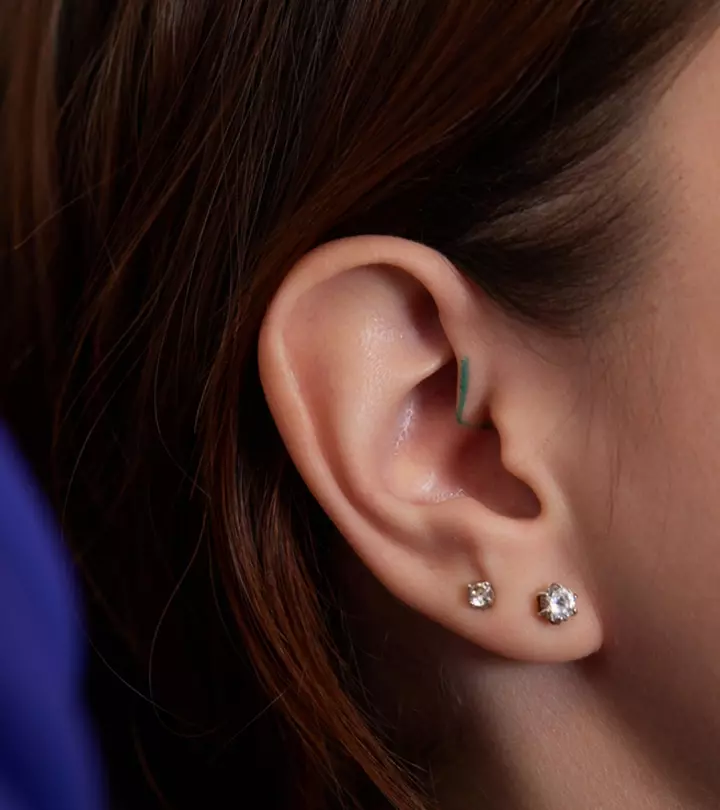
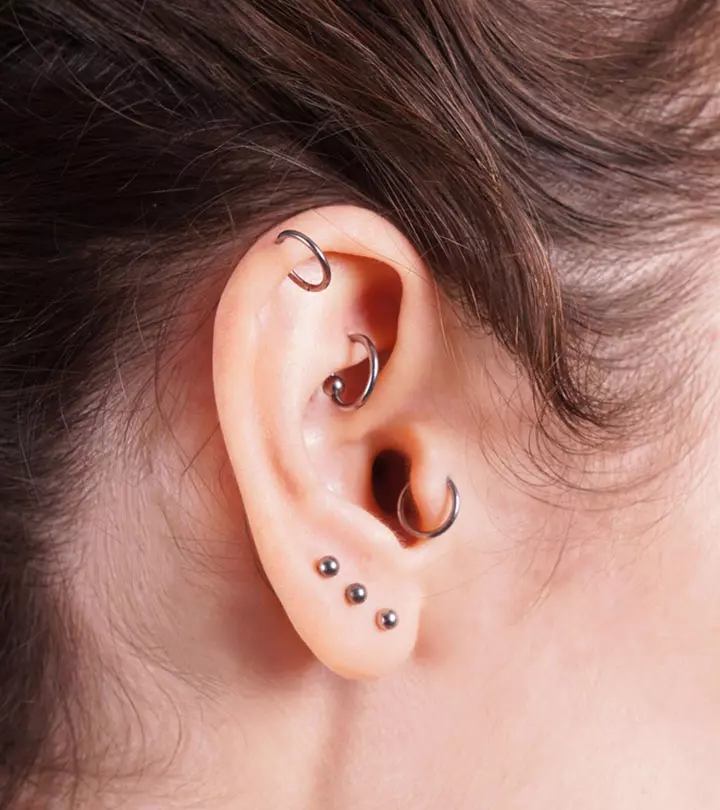
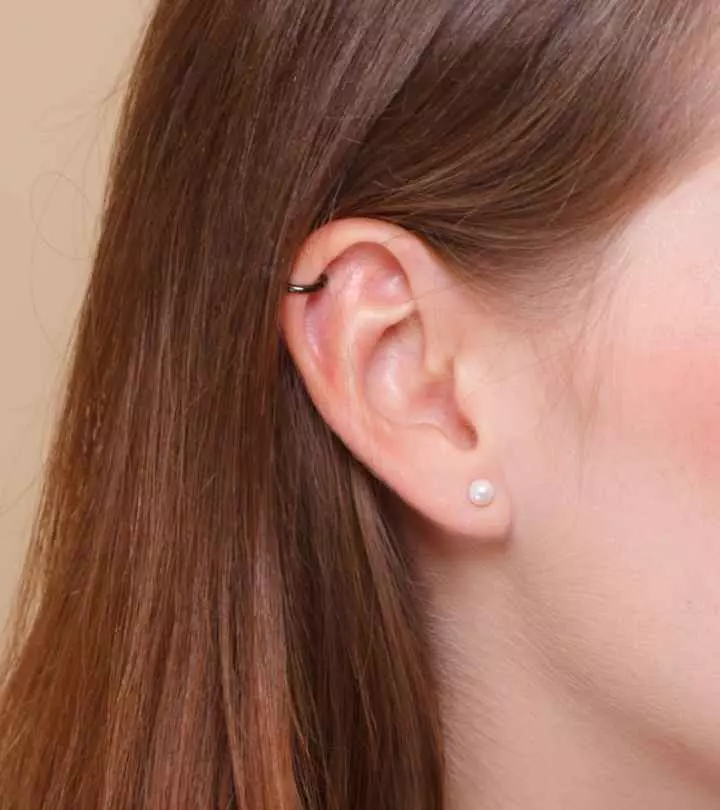
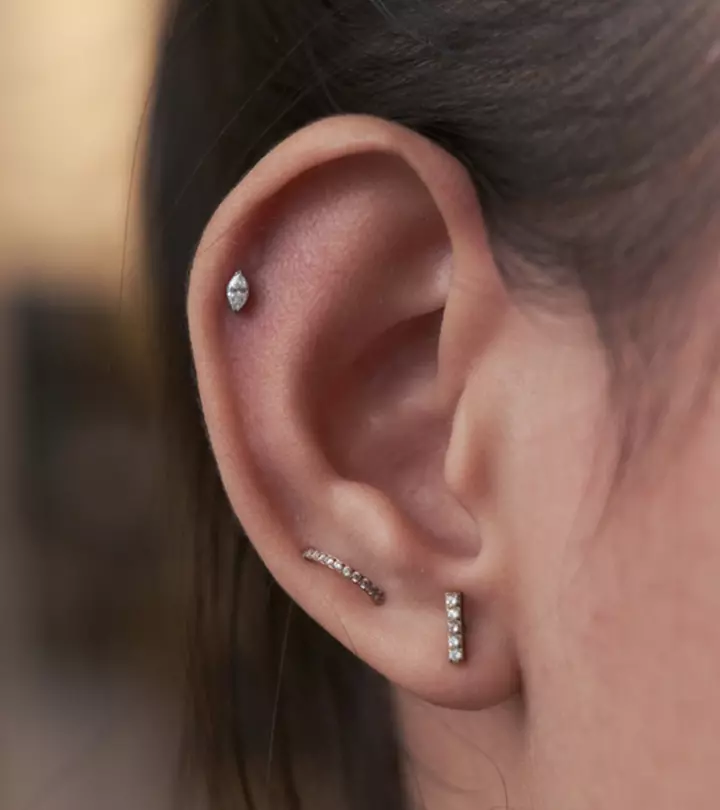
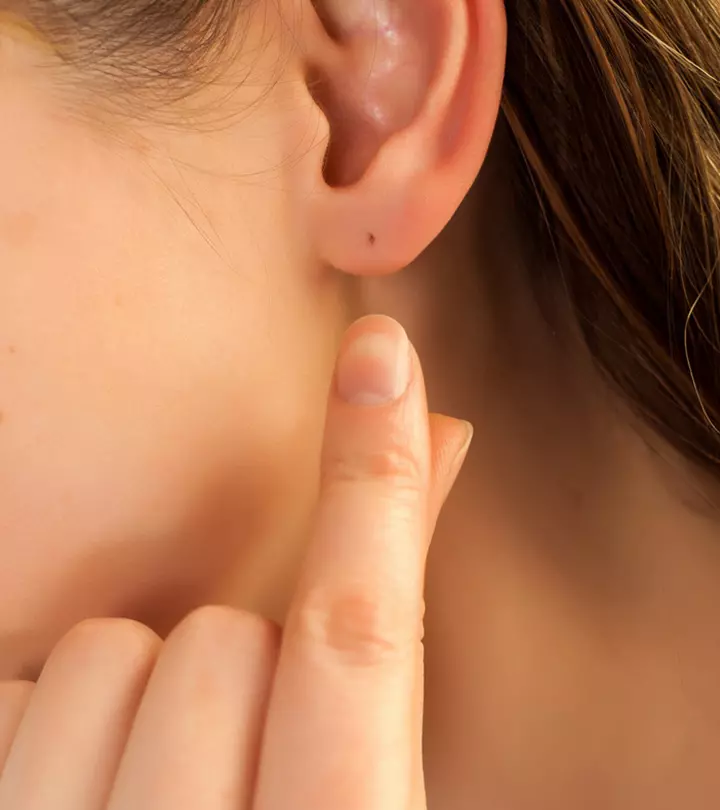


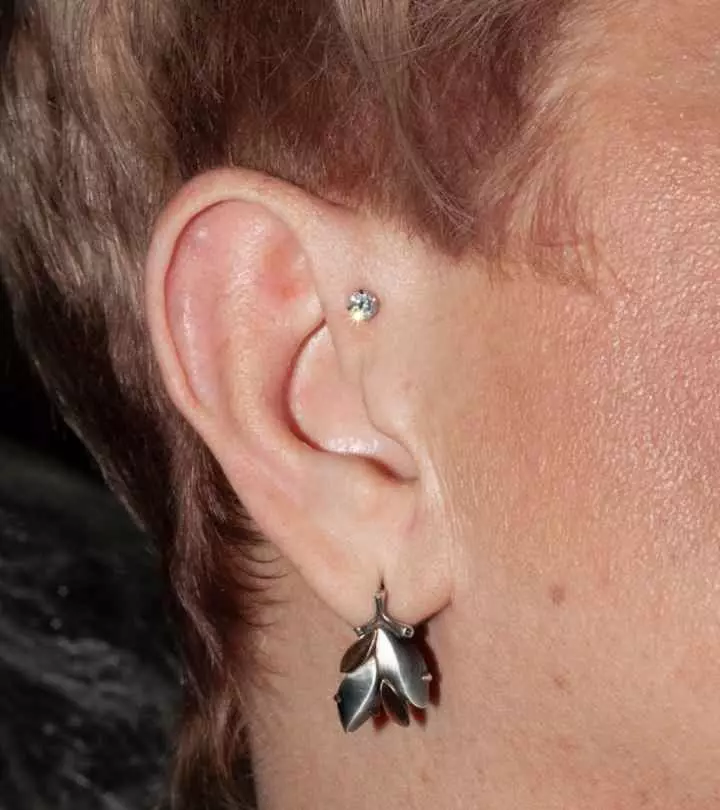



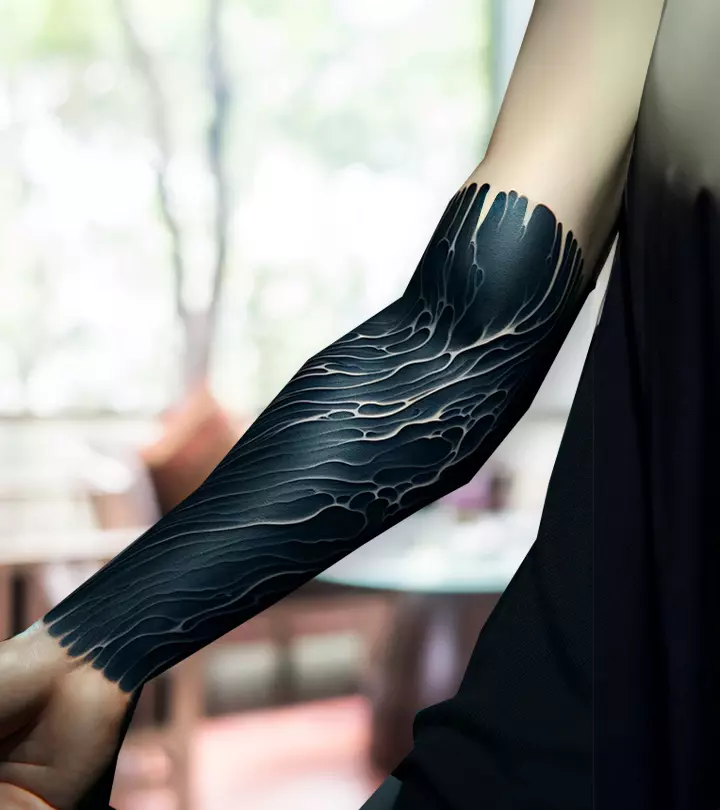



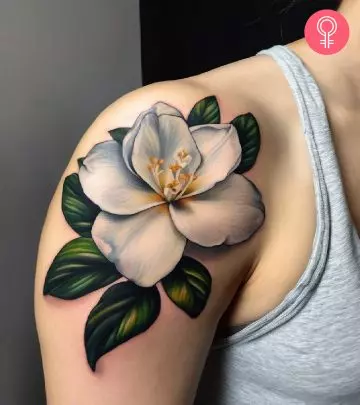

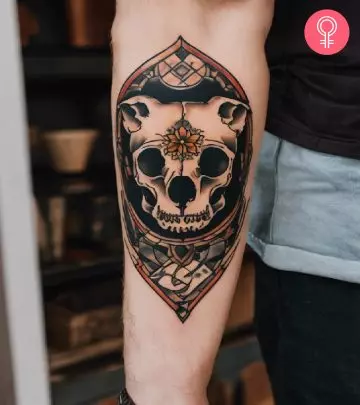
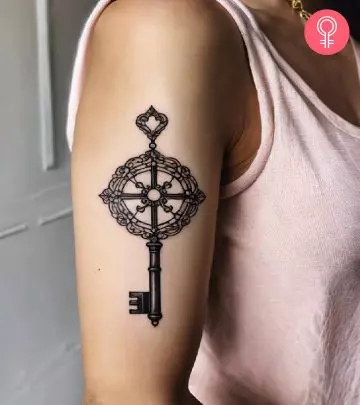
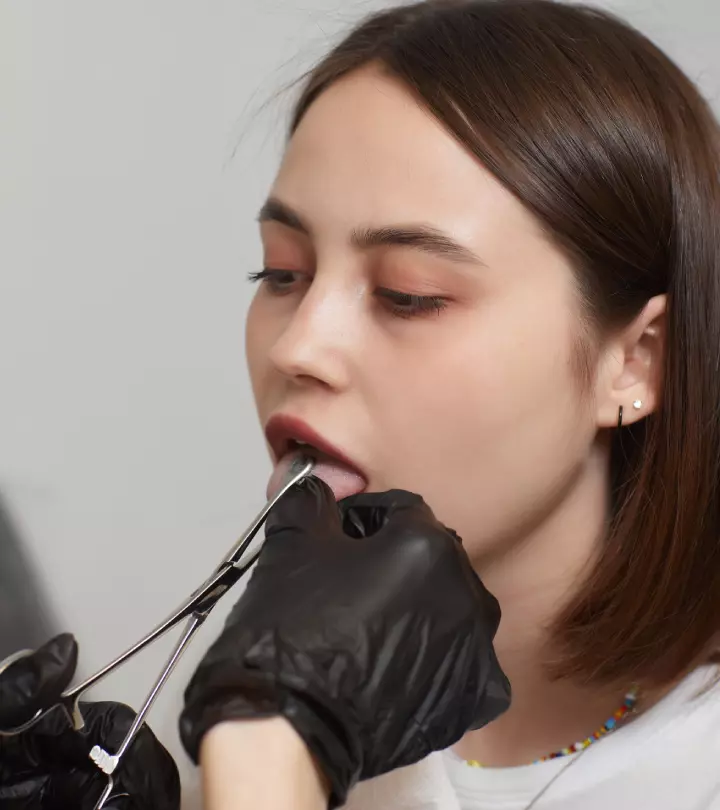

Community Experiences
Join the conversation and become a part of our empowering community! Share your stories, experiences, and insights to connect with other beauty, lifestyle, and health enthusiasts.